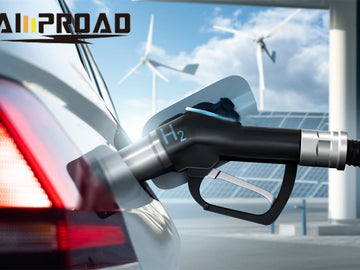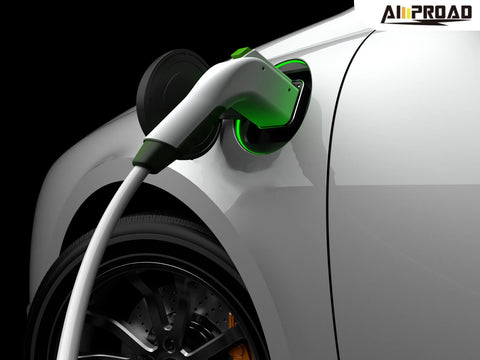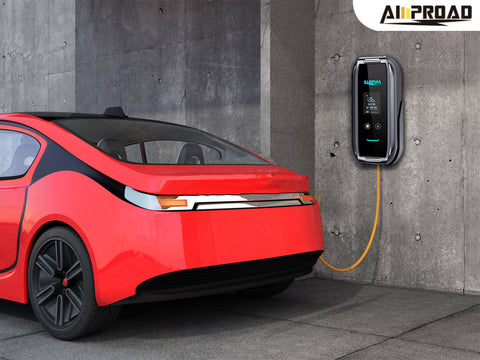
The anticipation of battery costs converging with traditional vehicle costs marks a pivotal moment in accelerating the development of electric vehicles (EVs). As advancements in battery technology continue, the decreasing costs of battery production bring EVs closer to price parity with conventional vehicles. This intersection is a catalyst for widespread adoption, making electric mobility increasingly accessible to a broader consumer base. As the economic viability of EVs becomes more apparent, the automotive industry is poised for a significant shift towards sustainable and environmentally friendly transportation solutions.
EV Charging Options for Electric Vehicles
Diverse Charging Options
The landscape of electric vehicle (EV) charging is dynamic and diverse, offering a range of options to cater to varying user needs. At the most basic level, EV owners can utilize regular household wall outlets, providing a convenient and accessible means of charging. However, as electric mobility advances, more sophisticated charging options have emerged.
Charging Levels
Understanding the different charging levels is essential for organizations and individuals alike. Level 1 charging occurs through a standard household outlet, offering the slowest but most accessible option. Level 2 charging stations utilizes higher voltage and is often found at public charging stations or installed at homes, providing a faster charging rate. The fastest charging is achieved with Level 3, or DC fast charging, typically available at dedicated charging stations. This option is ideal for quick top-ups during longer journeys.
Networked Charging Stations
Networked charging stations represent a crucial advancement in the EV charging infrastructure. These stations are equipped with technology that allows users to access, monitor, and pay for charging services through a centralized network. Organizations benefit from networked solutions as they provide data insights, remote management capabilities, and user authentication, ensuring controlled and secure access to charging facilities.
Benefits for Organizations
For organizations looking to install charging infrastructure, understanding the diverse charging options is imperative. Level 1 charging can be suitable for workplace or residential charging, while Level 2 EVSE charger may be more appropriate for public spaces or fleet management. Networked EV charging stations offer added benefits such as centralized control, usage tracking, and the ability to integrate with management systems.
User-Friendly Experience
Providing a user-friendly charging experience is vital for promoting widespread EV adoption. Networked charging stations, with their advanced features, enhance user convenience by offering real-time information on charging availability, session monitoring, and easy payment options. This fosters a positive charging experience, encouraging users to rely on EVs for their daily transportation needs.
Balancing Accessibility and Speed
The key to a successful charging infrastructure is finding the right balance between accessibility and charging speed. While Level 1 chargers are widely available and convenient, organizations must strategically deploy faster chargers, especially Level 2 and DC fast chargers, to accommodate diverse user requirements. This strategic deployment ensures that users have access to faster charging options when needed, supporting the practicality of EVs in various scenarios.

The "Top-Up" Model in Electric Vehicle Charging
The paradigm shift towards electric vehicles (EVs) introduces a transformative approach to refueling through the "top-up" model. This innovative concept allows EV drivers to charge wherever they park, fundamentally altering the dynamics of powering vehicles and offering unprecedented flexibility and convenience.
In essence, the top-up model revolves around the seamless integration of charging into the daily routines of EV owners. Unlike the traditional model, where drivers specifically visit gas stations for refueling, the top-up model eliminates the need for dedicated charging trips. Instead, electric vehicle owners can conveniently access charging infrastructure where they already spend significant time, such as at home, the workplace, shopping centers, or public parking lots.
Home charging is a cornerstone of the top-up model, allowing EV owners to leverage Level 1 and Level 2 charger installed at their residences. This simplicity ensures a fully charged battery each morning, establishing an efficient and hassle-free start to the day. Workplace charging further contributes to this ecosystem, enabling employees to charge their EVs while at work and promoting the integration of electric vehicles into corporate fleets.
Public charging networks play a pivotal role in enhancing the top-up model by providing charging options in various locations. From shopping centers and restaurants to entertainment venues, these public charging stations allow EV owners to top up their batteries while engaging in other activities, further integrating EV charging into daily life.
The top-up model effectively addresses range anxiety, a common concern among prospective EV buyers. Drivers no longer need to meticulously plan routes around charging stations; instead, they can seamlessly incorporate charging into their daily lives, eliminating the fear of running out of battery power during commutes or longer journeys.
The impact of the top-up model on EV adoption is substantial. By increasing the accessibility of level 2 EV charger, including the portalbe EVSE near me and minimizing the need for dedicated charging trips, the top-up model makes electric vehicles a practical and viable option for a broader audience. The reduced reliance on traditional gas stations aligns with a more decentralized and widespread charging infrastructure.
Moreover, the top-up model presents economic advantages for both EV owners and businesses. EV owners can leverage off-peak electricity rates for home charging, while businesses offering charging services can attract customers, potentially leading to increased foot traffic.
Despite the progress made by the top-up model, challenges remain. Ensuring a sufficiently dense charging infrastructure and standardizing charging connectors and protocols are essential for its seamless integration. Continued investments, collaborations, and advancements in battery technology will play crucial roles in addressing these challenges and contributing to the continued growth of electric mobility.
The top-up model redefines the charging experience for electric vehicles, turning it into a seamless and integrated part of daily life. As the charging infrastructure expands and technology evolves, the top-up model is poised to shape the future of electric mobility, offering a lifestyle choice that combines environmental sustainability, economic benefits, and unparalleled convenience.

AmpRoad: Empowering North America with Affordable and Safe EV Home Charging Solutions
As a prominent Level 2 EV charger manufacturer headquartered in Canada, Amproad specializes in delivering cutting-edge solutions tailored for the North American market. At the heart of our offerings is an affordable EV home charger that not only meets but exceeds rigorous industry standards, ensuring a safe and efficient solution for your home charging needs.
Our commitment to quality and safety is unwavering. The Amproad EV home charger undergoes a series of high-standard tests to guarantee its reliability and safety, providing users with peace of mind during every charging session. We understand the significance of home charging in the electric vehicle ecosystem, and our solution is designed to be the most secure and efficient way to power your electric vehicle at home.
Amproad's presence in the North American market signifies our dedication to providing accessible and reliable charging solutions. Our Level 2 EV home charger is not only an embodiment of technological innovation but also a testament to our commitment to sustainability and convenience. We aim to contribute to the growth of electric mobility by offering an affordable and high-quality charging solution that aligns with the unique needs of North American users.
Whether you are a seasoned electric vehicle owner or embarking on the journey of sustainable transportation, Amproad is your trusted partner for a seamless and efficient home charging experience. Our affordable EV home charger is a testament to our mission to make electric vehicle charging accessible, safe, and efficient for everyone in the North American market.
Why is Level 2 charging preferable for most organizations?
Level 2 charging stands out as the preferred option for many organizations due to its efficiency and ability to meet the charging needs of a larger user base. The primary advantage lies in the faster charging experience it offers, making it a practical and convenient solution for businesses aiming to serve a higher volume of drivers each day.
One of the key reasons Level 2 charging is preferred is its enhanced power output compared to Level 1 chargers. Home EV charger typically operat at higher and wider voltages (90-250 volts in the U.S.), resulting in a faster charging rate. This faster charging speed translates to reduced downtime for electric vehicles (EVs) at charging stations, allowing more drivers to access the chargers within a given time frame.
For organizations, especially those with a fleet of electric vehicles or workplace charging programs, the ability to accommodate a larger number of users is crucial. Level 2 chargers strike a balance between charging speed and accessibility, making them well-suited for environments where multiple users need to charge their vehicles during the day. This is particularly advantageous for businesses aiming to support the growing adoption of electric mobility among employees or customers.
Additionally, Level 2 chargers are often more versatile in terms of installation options and compatibility with various electric vehicles. They can be installed in a variety of locations, including parking lots, garages, and commercial spaces, providing flexibility for organizations to design charging infrastructure that aligns with their specific needs.
As the demand for electric vehicles continues to rise, Level 2 charging stations offer scalability and efficiency for businesses looking to invest in electric mobility infrastructure. The faster charging experience, coupled with the ability to cater to a larger number of drivers, positions Level 2 charging as the preferred choice for organizations seeking to embrace sustainable transportation and provide comprehensive charging solutions for their stakeholders.
How to Charge Tesla 110v with Level 2 EV Charger?

Charging a Tesla using a standard 110-volt power source can be a time-consuming process, as Level 1 charging is known for its slower charging rates. However, there's a more efficient solutionfor how to charge a Tesla – the Amproad Level 2 EV charger with a 14 50r adapter cord, offering Tesla owners a faster and safer way to charge their electric vehicles.
The Amproad Level 2 EV charger is designed with a focus on speed and reliability, providing a higher voltage (90-250 volts) charging experience compared to traditional household outlets. This elevated charging capability is crucial for Tesla owners seeking to reduce charging times without compromising on safety.
The inclusion of a NEMA 14-50R adapter enhances the charger's versatility, allowing Tesla owners to seamlessly connect their vehicles to a 14-50r outlet, commonly found in residential settings. This adapter serves as a crucial link, transforming the Level 2 charger into a powerful and efficient charging solution for Tesla electric vehicles.
What sets the Amproad Level 2 EV charger apart is not just its charging speed but also its commitment to safety. The charger undergoes rigorous testing to ensure it meets and exceeds industry standards, providing Tesla owners with a reliable and secure charging option. This emphasis on safety aligns with the high standards set by Tesla, safeguarding both the vehicle and the charging equipment.
When car won’t start, using the Amproad Level 2 EV charger with the NEMA 14-50R adapter cord is straightforward, making it an accessible solution for Tesla owners looking to enhance their home charging experience. The faster charging times facilitated by this combination ensure that Tesla vehicles spend less time plugged in, allowing owners to enjoy the benefits of electric mobility with increased convenience.


